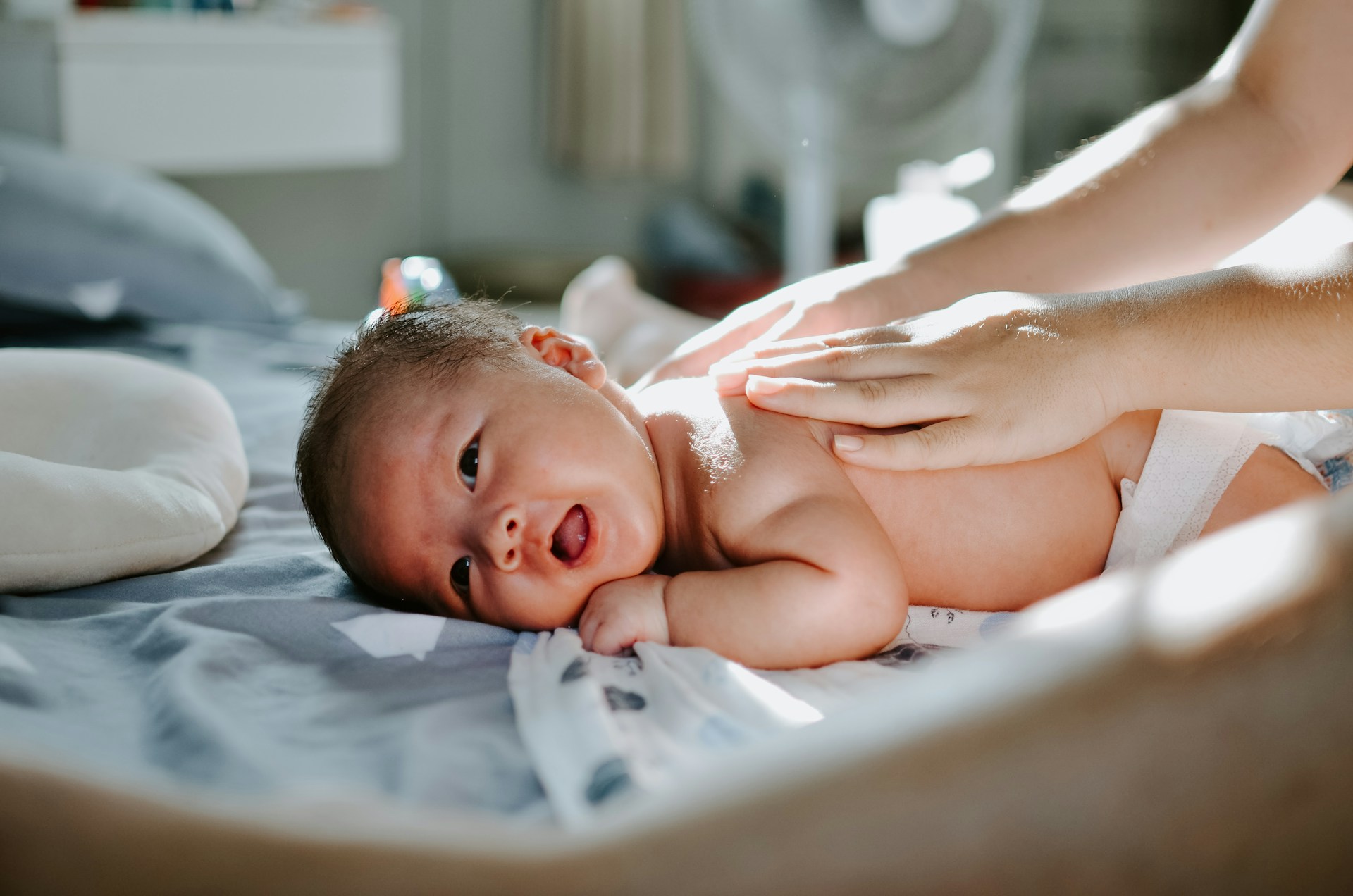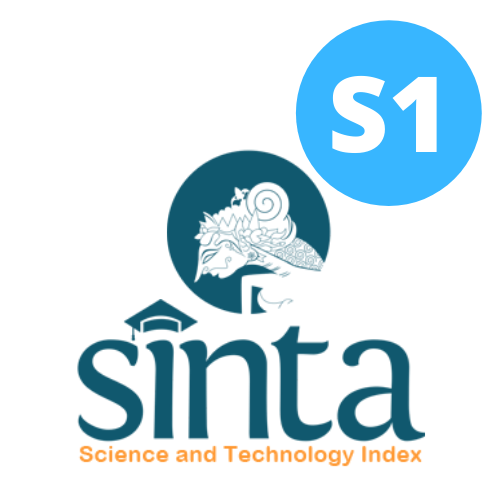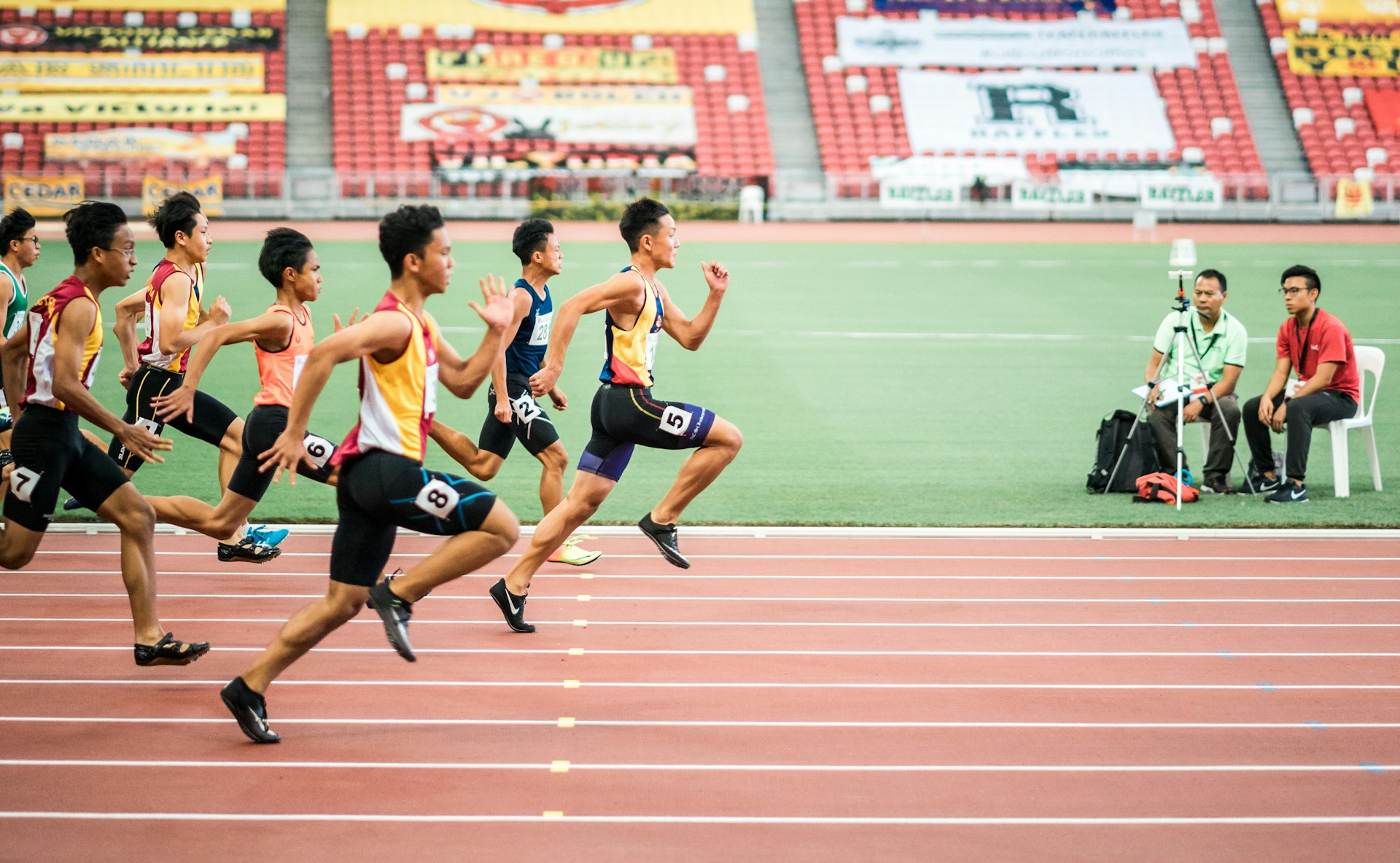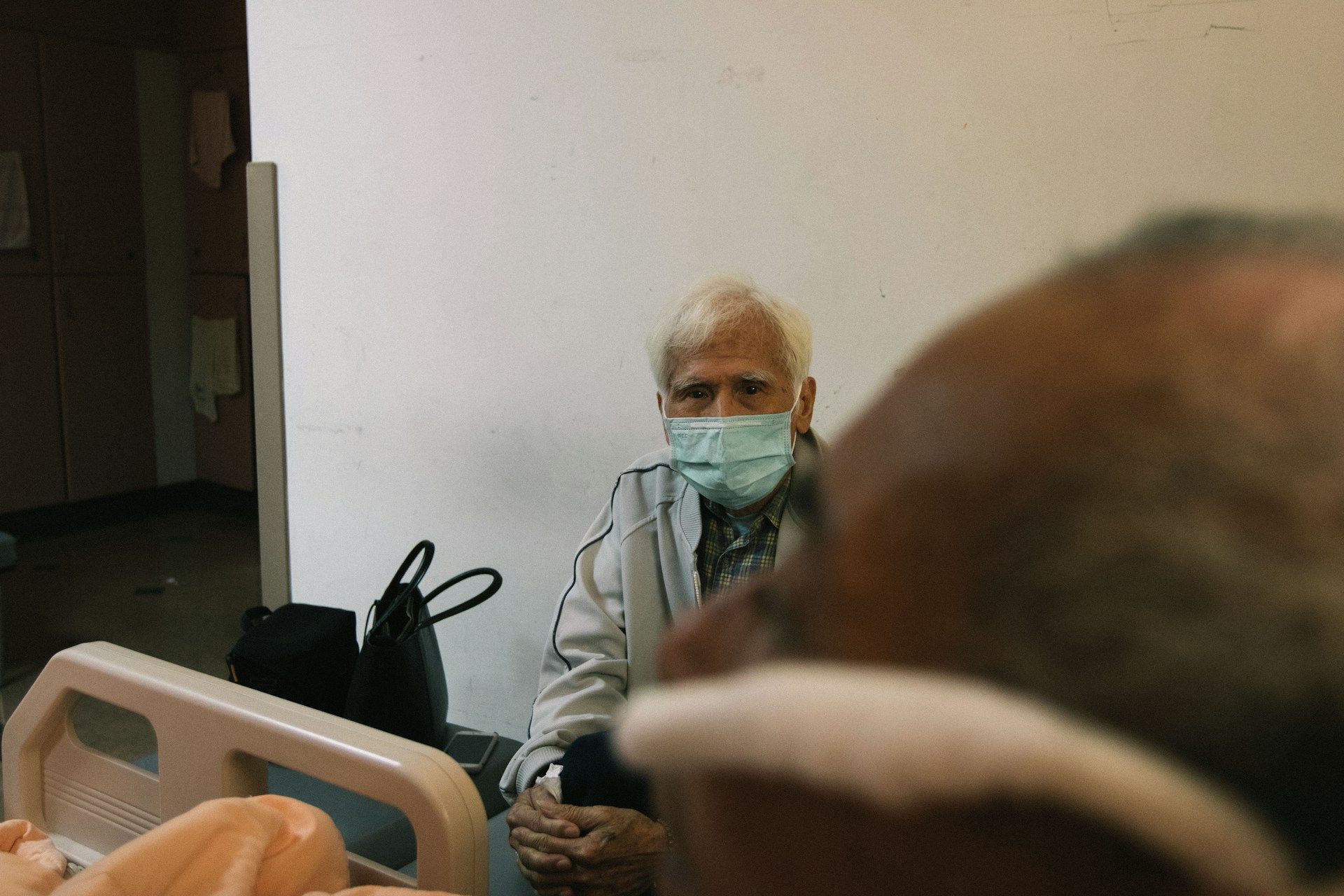The Relationship between Mid Upper Arm Circumference and Newborn Anthropometry Outcomes in West Sumatera, Indonesia
Hubungan Status Lingkar Lengan Atas Ibu Hamil dengan Antropometri Bayi Baru Lahir di Sumatera Barat, Indonesia

Downloads
Background: Mid-upper Arm Circumference (MUAC) during pregnancy is used to determine Chronic Energy Deficiency (CED). Pregnant women with CED are at risk of giving birth with Low Birth Weight (LBW), short, and wasting babies. Data from the West Sumatra Health Office show that the number of women suffering from continues to increase. The percentage of LBW per 1000 live births is also high and has not decreased significantly.
Objectives: To determine the relationship between MUAC and newborn anthropometry outcomes in West Sumatera, Indonesia.
Methods: This research used secondary data from the VDPM Cohort Study with 184 pairs of mothers and babies. The variables taken in this study were MUAC, Birth Weight (BWG), Birth Body Length (BLG), Birth Head Circumference (HDC), and Small for Gestational Age (SGA). Data analysis used descriptive analysis, Spearman Correlation, and Wilcoxon tests.
Results: There was a significant positive correlation between MUAC and the anthropometry of newborn babies (p-value<0.05, for all comparisons). The greater the MUAC, the greater the anthropometry outcomes. However, the correlation was weak. There was a significant relationship between MUAC and SGA (p-value≤0.001). Babies with appropriate gestational age (AGA) had normal MUAC status and women who had CED status most likely gave birth to a baby with an SGA status.
Conclusions: The MUAC status of pregnant women determines newborn anthropometry outcomes. Therefore, mothers can prepare for pregnancy by maintaining their health and nutritional status. Further studies are needed to confirm these findings.
Nurvembrianti I, Purnamasari I, Sundari A. Pendampingan Ibu Hamil dalam Upaya Peningkatan Status Gizi. J Inov Terap Pengabdi Masy. 2021;1(2):50-55. doi:https://doi.org/10.35721/jitpemas.v1i2.19
Fatmawati, Petrus, Kristianto J, Abadi E. Nutritional Addition to Increasing the Weight of Pregnant Woman with Cronic Energy Deficiency in the Coastal Area of Kendari City. Indones J Heal Sci Res Dev. 2023;5(2):115-121. doi:10.36566/ijhsrd/Vol5.Iss2/182
Metasari AR, Ermawati, Kasmiati. Hubungan Lingkar Lengan Atas (LILA) dan Kenaikan Berat Badan Ibu Hamil dengan Taksiran Berat Janin. J Ilm Kesehat. 2022;15(1):23-29. doi:10.48144/jiks.v15i1.668
Nuryani, Ayu Mustika Handayani. Hubungan Lingkar Lengan Atas (LiLA), Hemoglobin (Hb), dan Asupan Fe terhadap Berat Badan Lahir Bayi. Poltekita J Ilmu Kesehat. 2022;16(2):228-234. doi:10.33860/jik.v16i2.1255
Kementrian Kesehatan Republik Indonesia. Survei Kesehatan Indonesia (SKI) Dalam Angka.; 2023.
Kemenkes RI. Hasil Riset Kesehatan Dasar Tahun 2018.; 2018.
Dinkes Sumatra Barat. Riset Kesehatan Dasar Provinsi Sumatera Barat Tahun 2018.; 2018.
Laporan Akuntabilitas Kinerja Instansi Pemerintah (LAKIP) Dinas Kesehatan Provinsi Sumatera Barat. Vol 53. Dinas Kesehatan Sumatera Barat; 2020.
Departemen Kesehatan. Laporan Akuntabilitas Kinerja Instalasi Pemerintah (LAKIP) Ditjen Kesehatan Masyarakat TH 2021. Kementrian Kesehatan Republik Indonesia; 2021.
Dinas Kesehatan Provinsi Sumatera Barat. Laporan Akuntabilitas Kinerja Pemerinta.; 2023.
Aji AS, Lipoeto NI, Yusrawati Y, et al. Association between Pre-Pregnancy Body Mass Index and Gestational Weight Gain on Pregnancy Outcomes: a Cohort Study in Indonesian Pregnant Women. BMC Pregnancy Childbirth. 2022;22(1):1-12. doi:10.1186/s12884-022-04815-8
Zhao R, Xu L, Wu M, Huang S, Cao X. Maternal Pre-Pregnancy Body Mass Index, Gestational Weight Gain Influence Birth Weight. ELSEVIER: Woman and Birth. 2018;31(1):20-25. doi:https://doi.org/10.1016/j.wombi.2017.06.003
Amalia R, Nurdin A, Sari JI, Sakinah AI. Hubungan Lingkar Lengan Atas Ibu Hamil terhadap Atropometri Bayi Baru Lair di Rumah Sakit Ibu dan Anak Ananda Kota Makasar. J Kedokt. 2020;6(1):1-4. doi:http://dx.doi.org/10.36679/kedokteran.v6i1.274
Rani DN, Phuljhele DS, Beck DP. Correlation between Maternal Mid Upper Arm Circumference and Neonatal Anthropometry. Int J Med Res Rev. 2017;5(7):717-724. doi:10.17511/ijmrr.2017.i07.10
Vasundhara D, Hemalatha R, Sharma S, et al. Maternal MUAC and Fetal Outcome in an Indian Tertiary Care Hospital: A Prospective Observational Study. Matern Child Nutr. 2020;16(2):1-8. doi:10.1111/mcn.12902
Aji AS, Yusrawati Y, Malik SG, Lipoeto NI. Prevalence of Anemia and Factors Associated with Pregnant Women in West Sumatra, Indonesia: Findings from VDPM Cohort Study. J Gizi dan Diet Indones (Indonesian J Nutr Diet. 2020;7(3):97. doi:10.21927/ijnd.2019.7(3).97-106
Irmitasari I, Nurdiati DS, Hadiati DR. Pengaruh Preeklamsia dan Hipertensi Kronis terhadap Kejadian Bayi Kecil Masa Kehamilan (KMK). J Kesehat Reproduksi. 2018;5(3):139. doi:10.22146/jkr.39137
Kemenkes RI. Pedoman Proses Asuhan Gizi Puskesmas. 1st ed.; 2018.
Kemenkes RI. Pedoman Pemantauan Pertumbuhan Balita. 1st ed. Kementrian Kesehatan Republik Indonesia; 2021.
Sinaga D. Statistik Dasar. 1st ed. (Aliwar, ed.). UKI Press; 2014.
Ningsih P. Hubungan Umur, Pengetahuan dan Dukungan Keluarga dengan Kunjungan Antenatal Care (Anc) (K4) Ibu Hamil Di Puskesmas Pariaman Tahun 2018. J Ilmu Keperawatan dan Kebidanan. 2020;11(1):62. doi:10.26751/jikk.v11i1.675
Prayitno FF. Hubungan Pendidikan dan Pengetahuan Status Gizi Ibu Hamil pada Keluarga dengan Pendapatan Rendah di Kota Bandar Lampung. Digit Repos Unila. 2019;3(2). doi:https://doi.org/10.33143/jhtm.v3i2.1023
Listiyana F, Aji AS, Sari SDP, et al. The Association between Education Levels and the Interest Level in Gene-Based Nutrition Services in Indonesia. Amerta Nutr. 2023;7(2SP):261-268. doi:10.20473/amnt.v7i2SP.2023.261-268
Hadi H, Winda I. High Deficit in Nutrient Intakes Was Associated with Poor Nutritional Status of Pregnant Women: A Study from Eastern Indonesia. Curr Dev Nutr. Published online 2020. doi:https://doi.org/10.1093/cdn/nzaa043_050
Ningsih C, Rifatul M. Hubungan Pendapatan, Tingkat Pendidikan, dan Tingkat Kecukupan Energi terhadap Status Gizi Ibu Hamil. J Ilm Gizi dan Kesehat. 2021;3(01):32-36. doi:https://doi.org/10.46772/jigk.v3i01.566
Kurniawati I, Istiyati S. Hubungan Hipertensi dan Jarak Kehamilan pada Ibu Hamil dengan Kejadian Bayi Berat Lahir Rendah di RSUD Wates. Indones J Heal Dev. 2023;5(2):60-72. doi:https://doi.org/10.52021/ijhd.v5i2.125
Sasmita H, Khotimah H. Factors related to Low Birth Weight ( LBW ) in the Perinatology Room Drajat Prawiranegara Regional Hospital Poltekkes Kemenkes Palu Universitas Faletehan. J Ilmu Kesehat. 2020;14(2):128-133. doi:https://doi.org/10.33860/jik.v14i2.136
Kusumawati DD, Septiyaningsih R. Hubungan Paritas dengan Kejadian BBLR di RSUD Cilacap Tahun 2014. jJurnal MID-Z. 2020;3(1):7-9. doi:https://doi.org/10.36835/jurnalmidz.v3i1.641
Dwi Listiarini U, Maryati E, Sofiah NS. Status Gizi Ibu Hamil Berhubungan dengan Bayi Berat Badan Lahir Rendah (BBLR). J Kesehat Mahardika. 2022;9(2):10-15. doi:10.54867/jkm.v9i2.107
Setiati AR, Rahayu S. Faktor yang Mempengaruhi Kejadian BBLR (Berat Badan Lahir Rendah) Di Ruang Perawatan Intensif Neonatus RSUD DR Moewardi Di Surakarta. J Keperawatan Glob. 2017;2(1):9-20. doi:10.37341/jkg.v2i1.27
Rismawati RA, Ningrum WM. Description of Infant Outcomes to Mothers with Histiry of Chronic Energy Lack in the Work Area of the Sadana Health Center in 2020. J Midwifery Public Heal. 2021;3(1):2685-4007. doi:https://doi.org/10.1136/bmjopen-2020-045862
Rahman H, Nulanda M, Nurmadilla N, Dewi AS, Darma S. Analisis Status Gizi Ibu Sebelum Hamil terhadap Pemeriksaan Antropometri Luaran Bayi Baru Lahir Di Rumah Sakit Nenemallomo Kabupaten Sidenreng Rappang Sulawesi Selatan. Innov J Soc Sci Res. 2024;4(3):5492-5508. doi:https://doi.org/10.31004/innovative.v4i3.9998
Angga Arsesiana. Analisis Hubungan Usia Ibu dan Jarak Kehamilan dengan Kejadian Bayi Berat Lahir Rendah (Bblr) Di Rs Panembahan Senopati Bantul. Jurnal_Kebidanan. 2021;11(1):592-597. doi:10.33486/jurnal_kebidanan.v11i1.136
Mouliza N, Pratiwi D. Hubungan Umur, Paritas dan Pemeriksaan Kehamilan dengan Bayi Berat Lahir Rendah. Wind Heal J Kesehat. 2019;2(3):277-284. doi:10.33368/woh.v0i0.183
Yuliana Y, Istianah I. Hubungan Lingkar Lengan Atas dan Usia Ibu Hamil terhadap Kejadian Bayi Berat Badan Lahir Rendah. J Pangan Kesehat dan Gizi Univ Binawan. 2021;1(2):78-85. doi:10.54771/jakagi.v1i2.189
Ningrum EW, Cahyaningrum ED. Status Gizi Pra Hamil Berpengaruh terhadap Berat dan Panjang Bayi Lahir. J Ilm Ilmu-ilmu Kesehat. 2018;16(2):89-94. doi:https://doi.org/10.30595/medisains.v16i2.3007
Wulandari AF, Sutrisminah E, Susiloningtyas I. Literature Riview: Dampak Anemia Defisiensi Besi pada Ibu Hamil. J Ilm PANNMED (Pharmacist, Anal Nurse, Nutr Midwivery, Environ Dent. 2021;16(3):692-698. doi:http://dx.doi.org/10.36911/pannmed.v16i3.1219
Paulsen CB, Nielsen BB, Msemo OA, et al. Anthropometric Measurements can Identify Small for Gestational Age Newborns: A Cohort Study in Rural Tanzania. BMC Pediatr. 2019;19(1):1-10. doi:10.1186/s12887-019-1500-0
Ambreen S, Yazdani N, Alvi AS, Qazi MF, Hoodbhoy Z. Association of Maternal Nutritional Status and Small for Gestational Age Neonates in Peri-Urban Communities of Karachi, Pakistan: Findings from the PRISMA Study. BMC Pregnancy Childbirth. 2024;24(1):1-8. doi:10.1186/s12884-024-06420-3
Fajriana A, Buanasita A. Risk Factors Associated with Low Birth Weight at Semampir District, Surabaya. Media Gizi Indones. 2022;13(1):71. doi:10.20473/mgi.v13i1.71
Annigeri S, Ghosh A, Hemram SK, Samsal R, P MJ. Universal Health Coverage ‑ There is More to it than Meets the Eye. J Fam Med Prim Care. 2022;6(2):169-170. doi:10.4103/jfmpc.jfmpc
Copyright (c) 2024 Amerta Nutrition

This work is licensed under a Creative Commons Attribution-ShareAlike 4.0 International License.
AMERTA NUTR by Unair is licensed under a Creative Commons Attribution-ShareAlike 4.0 International License.
1. The journal allows the author to hold the copyright of the article without restrictions.
2. The journal allows the author(s) to retain publishing rights without restrictions
3. The legal formal aspect of journal publication accessibility refers to Creative Commons Attribution Share-Alike (CC BY-SA).
4. The Creative Commons Attribution Share-Alike (CC BY-SA) license allows re-distribution and re-use of a licensed work on the conditions that the creator is appropriately credited and that any derivative work is made available under "the same, similar or a compatible license”. Other than the conditions mentioned above, the editorial board is not responsible for copyright violation.












































